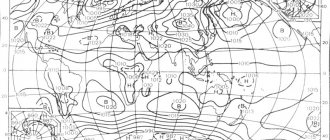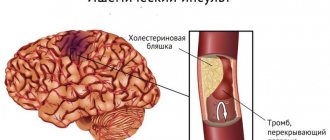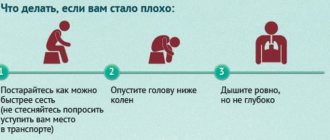Normal blood pressure for an adult is 120/80. Deviations of 10 points are allowed. When the indicators remain stable and the person feels good, this pressure is called working pressure.
If it changes sharply, it poses a danger to life, because it negatively affects the functioning of various organs and can result in death, and the cause can be either too low or too high values. Previously, such problems were characteristic only of older people, but now similar things can happen to young people.
Very high, as well as very low blood pressure is dangerous for humans
What it is?
The main organ of human life is the heart. This is a pump for pumping blood, supplying oxygen to all organs and systems of the body. For this reason, there are several phases in the functioning of the heart muscle:
- diastole;
- systole.
Based on the parameters of the functioning of the heart muscle in humans, the upper and lower limits of blood pressure are distinguished. Its sharp fluctuations are characterized by their ability to affect the body in a negative way: high and low pressure are unsafe for life.
If earlier the quantitative ratio of people suffering from high blood pressure (hypertension) was much higher than those with low blood pressure (hypotension), now the situation is changing dramatically. Heart and vascular diseases occupy one of the leading places in mortality throughout the world. The disease itself is also getting younger. If before this time older people suffered from coronary artery disease, now this disease is becoming younger.
Examination for strangulation asphyxia
The following types of strangulation asphyxia are distinguished:
- Hanging.
- Strangulation (strangulation) with a noose.
- Strangulation (strangulation) by hand.
- Strangulation with a hard object.
When hanging, the mechanical impact on the organs of the neck is exerted by the loop under the influence of the gravity of the entire human body or its parts. Hanging may be complete or partial. The loops used for hanging are divided into hard (cables, wire, chains, etc.), semi-rigid (ropes, belts, etc.) and soft (towels, scarves, rags, ties, etc.). In rare cases, when hanging, the neck is compressed not by a noose, but by a blunt object (the rung of a ladder, tree branches, the back of a chair, etc.). The location of the hinge assembly can be lateral, posterior or anterior. The typical position of the node is posterior. Lateral and anterior positions are much less common.
Strangulation (strangulation) with a noose is carried out by tightening a noose around the neck using the hands or some kind of mechanism. In this case, the traumatic effect on the organs of the neck is due to the force of the attacker or the mechanism. The deceased could have tightened the noose around the neck independently using a device such as a twist or the handle of a spoon. Suicide by noose strangulation is rare. Most often, noose strangulation is a type of murder. However, accidents are also possible when parts of clothing (scarf, tie, etc.) get caught in various rotating mechanisms.
An important sign of mechanical asphyxia during hanging and strangulation (suffocation) with a noose is a strangulation groove - a mark from the pressure of the noose on the neck (in rare cases, from a blunt object). As a result of the impact of the loop material on the neck, the epidermis is desquamated. After removing the loop, the damaged areas on the skin become denser and dry out. Hemorrhages may form at the site of the strangulation groove. During the examination of asphyxia in the case of hanging or strangulation with a noose, special attention is paid to the description of the strangulation groove, in particular, its following signs are indicated:
- Location (indicates the part of the neck in which the groove is located).
- The nature of the furrow (single, double, closed, open, etc.).
- Direction (horizontal, upward, etc.).
- Dimensions (width, depth).
- Characteristic features (density, description of the bottom and edges of the furrow).
- The presence of hemorrhages around the strangulation groove.
- Intravital (or postmortem) nature of the furrow.
The strangulation groove that appeared intravitally has more pronounced signs. While the post-mortem furrow may be barely noticeable. Establishing the intravital (or postmortem) nature of the occurrence of a strangulation furrow during an examination for asphyxia is of great importance for determining the cause of death, since hanging of the body is often performed posthumously - to simulate suicide or to mask another cause of death, for example, strangulation with a noose.
When strangulated by hand, death occurs from compression of the carotid arteries, veins and nerves, as well as as a result of reflex cardiac arrest. For strangulation, fingers and hands are used, less often - forearms and shoulders. Asphyxia can occur from pressure with the forearm on the neck of a lying person or from compression of the neck in the elbow bend (between the shoulder and forearm), usually with the other hand fixing the bend. Strangulation with a hard object involves traumatic impact on the neck with a blunt, hard object. Sometimes suffocation occurs as a result of an accident when the neck gets caught in mechanically closing doors. Examination of asphyxia in such cases pays special attention to the marks left on the neck in the form of hemorrhages that take the shape of the killer’s fingers or the shape of the object with which the strangulation was carried out. Based on the nature of the traces, the method of murder can be determined. Suicide through manual strangulation is impossible, since the person quickly loses consciousness and the arm muscles relax.
Standard indicators
Blood pressure is the force acting on the blood vessels. The definition of “arterial” refers to vascular pressure parameters. There are:
- venous;
- capillary;
- heart pressure.
Standard blood pressure indicators for vital functions are 120/80 (maximum 140/90). If the value is too high, there is a tendency towards hypertension. Maximum - the upper pressure is systolic, the heart muscle contracts. Minimum – diastolic (relaxation phase).
To determine the optimal blood pressure value, it is not necessary to focus on established standards. A person may well have individual characteristics of blood pressure. If there are non-standard indicators, you should pay close attention to your health and consult a doctor.
Pulse is an indicator of blood pressure. The norm for humans is 60-80 beats. /min. By measuring your heart rate, you can learn about an upcoming problem. If the number of heartbeats increases after 2-3 hours after eating, food poisoning can be detected. During magnetic storms, a decrease in blood pressure is observed. In response to this, the heart rate increases to maintain optimal blood pressure levels.
Established blood pressure norm
For each person, due to the characteristics of the body, age, lifestyle and professional component, blood pressure may vary. Optimal indicators = 120 to 80 (for an adult of average build), but during pregnancy and lactation, during illnesses and nervous breakdowns, after surgical operations, pressure tends to change.
Also, the numbers will be different when measuring blood pressure in older people and children, so it is wrong to take normative data as the “gold” standard. A pressure of 120 over 80 is the norm to which you should strive; it is taken as an average correct indicator.
Reasons for measuring blood pressure
The reasons for changing the parameters are as follows:
- Lack of ability of the heart muscle to function normally, as before.
- Changes in blood quality parameters. As you age, your blood thickens. The higher the degree of its density, the harder it moves through the vessels. The causes of blood thickening can be diabetes and autoimmune pathological diseases.
- Decreased elasticity of blood vessels. The causes of this condition are poor nutrition, exceeding the limit of permissible physical activity, and a certain list of medications.
- The formation of atherosclerotic plaques that appear in the bloodstream as a result of high concentrations of “bad” cholesterol in the body.
- A sharp decrease in the lumen of blood vessels, provoked by hormones.
- Incorrect activity of the endocrine system.
Terminal condition: signs of impending death
Before death occurs, that is, the biological shutdown of all human systems, natural and nature-provided changes occur in the body, one of which is a sharp decrease in readings on devices that record pressure (lower and upper). Also, indications of the functioning of systems and organs indicate the approach of biological death. There are general medical signs by which one can judge the beginning of the pre-death stage: lack of oxygen causes hypoxia (brain and tissues), the processes responsible for the inflow and outflow of blood are inhibited, and the following also occurs:
- change in the structure of the blood - its acidification;
- it becomes difficult for a person to breathe.
Critical indicators
Critical pressure is the value at which the main load falls on the heart and vascular system, which affects the condition. Sharp fluctuations in blood pressure lead to disruption of the cardiovascular system.
It is impossible to indicate the exact parameters of critical pressure for humans. An overestimated blood pressure value by 20-30 points from the maximum permissible is dangerous, more than 30 is a critical indicator. Here is the critical pressure for a person:
- below 100/60 – hypotension;
- above 140/90 – hypertension.
Deadly high blood pressure, when the tonometer reaches a value of 300, in a similar situation death occurs. Hypertensive crisis – 260 to 140. Critical low pressure – 70/40 or less.
The maximum permissible level provokes the occurrence of heart failure; if the symptoms are ignored, death occurs.
If a patient’s temperature rises against the background of a blood pressure failure, this is an alarming signal. Critical temperature and pressure are especially dangerous for people with coronary heart disease, diabetes, heart failure, atherosclerosis and arrhythmia.
Be careful, sometimes a combination of such symptoms accompanies myocardial infarction. And the temperature may rise slightly.
Norms by age group
Medical indicators for this parameter are considered ideal when the numbers on the tonometer are 120/80. It is important to take into account a certain feature - a person’s normal blood pressure can change with age. Here is an example of such changes:
- older generation (50) – 130/80 and 110/70, as well as 100/60;
- age group (75+) – 140/80;
- teenagers (boys and girls, respectively) – 120/70 and 110/70.
For people in the older age group, indicators of 110/70 can affect their well-being:
- noticeable loss of strength;
- an attack of dizziness.
Important! Over time, as inevitable biochemical processes occur in the body, blood pressure gradually increases, so the limit at which one can judge the development of pathological changes shifts.
You should always pay attention to your health status. If your normal blood pressure has been low throughout your life, and then it changes to 120/80 or higher, accompanied by general malaise, then you should consult a doctor. Conversely, if the usual level was always 130/90, and then it began to drop to the normal 120/70 values, then in this case it is also necessary to make an appointment with a specialist.
Why does blood pressure rise?
Pressure fluctuations don't just happen. Blood pressure values are influenced by factors that are not always related to the incorrect functioning of the body. Increased blood pressure - review of lifestyle and diet.
Factors that cause increased blood pressure:
- Dehydration. The norm for human fluid intake is 2 liters, the water must be clean. In the absence of the required amount of water, the blood thickens, the heart functions at the maximum permissible speed, which provokes an increase in blood pressure.
- Eating fatty foods with significant cholesterol levels. Cholesterol plaques settle on the walls, interfering with the movement of blood through the vessels.
- High salt intake.
- Having bad habits.
- Frequent heavy physical activity, as well as lack thereof. With increased loads, disruptions in orgasm are observed, with physical inactivity, the outflow of blood worsens, and the strength of the heart muscle weakens.
- Frequent stressful situations.
- Heredity, menopause, kidney failure, head injuries.
Classification of hypertension
In 1999, the World Health Organization proposed a unified classification of hypertension, which is still relevant today. According to it, there are 3 degrees of blood pressure increase:
- First (soft) – the indicators are 159 to 90/99;
- Second (average) - with a pressure of 179 to 100/109;
- Third (severe) – measurement data 180 or more by 110 or higher.
Patients of the first group often face problems with cerebral circulation, while the second and third groups already suffer from problems with the functioning of internal organs.
Almost all hypertensive patients experience a change in climatic conditions - the body reacts to changes in temperature (with the onset of frost and extreme heat); with increased humidity and magnetic storms, a person feels a deterioration in their health.
Causes of low blood pressure
It is influenced by the following factors:
- Stress, emotional tension.
- Mental and physical stress.
- Labor activity (underground work, in wet rooms, extreme conditions, workshops with high temperatures, with acids and alkalis).
- Diseases of the central nervous system, heart and blood vessels, adrenal glands, thyroid gland.
- Static.
Important! Hypotension is observed in athletes as a protective reaction in the presence of constant physical activity.
During pregnancy
Low blood pressure during this period should be considered as part of the development of pathology. And in order to present a more complete picture of the causes and possible consequences of this phenomenon, the process must be divided as follows:
- The first possible cause of low blood pressure is pregnancy itself. That is, it provokes this phenomenon due to early toxicosis that occurs in the first half of the term.
- The second option is that the cause of hypotension is associated with complications associated with pregnancy - this could be a threatened or already begun abortion, accompanied by uterine bleeding. In other cases, blood pressure usually increases.
- Hypotension - already occurred before pregnancy and did not disappear when it occurred. Under such circumstances, there is no threat to the future woman in labor. But serious complications can occur for the fetus. Since slow blood flow in the vessels also negatively affects the blood circulation of the fetus. Intrauterine hypoxia may occur, and this is fraught with very serious consequences.
The danger of high blood pressure
An increased blood pressure value entails irreversible processes in the body. A significant portion of the hazardous impact occurs on the activity of the heart and blood vessels. Every year, about a million people die worldwide due to CVD disease, with the majority dying as a result of hypertension.
An increased blood pressure value is accompanied by hypertensive crises - sharp fluctuations in pressure to a critically dangerous level.
Hypertensive crisis is a sudden increase in blood pressure to 180/110 or more. If after 5 minutes the pressure does not change, you need to urgently take measures to reduce the levels. A long stay in such a state is fraught with the development of complications: stroke, swelling in the lungs, acute failure of the heart. In view of this, priority assistance is provided immediately.
Hypertensive crisis occurs:
- Uncomplicated. There are no serious disruptions in the performance of the heart muscle, brain, or kidneys. After several hours of taking the medications, blood pressure normalizes.
- Complicated. Its occurrence is extremely rare. In this condition, the digestive organs come under attack.
During a hypertensive crisis, a sharp expansion of blood vessels and their ruptures are observed. The patient complains of migraines and pain in the heart, fever, nausea, and vision deterioration. Complications that pose a particular mortal danger include heart attack and stroke. In the chronic course of hypertension, vital organs - the heart, kidneys, eyes - are affected:
- a stroke is accompanied by a sudden deterioration in blood circulation in the structures of the brain, paralysis occurs, which can remain for life;
- renal failure - metabolic failures, the kidneys cannot perform their functions - urine formation;
- When the eyes are affected, vision deteriorates and hemorrhage is observed in the eyeball.
When diagnosing hypertension, traditional treatment methods should not be excluded. On the contrary, they are used as an addition to the general course of therapeutic treatment, and their use is agreed upon with the therapist. Diuretic preparations are used in combination with drug treatment. Chopped cranberries with honey help a lot.
Classification of types of mechanical asphyxia used during examination of asphyxia
Modern forensic medicine identifies the following types of acute oxygen deficiency caused by external causes (mechanical asphyxia):
- Strangulation asphyxia (strangulation with a noose or hands, hanging).
- Compression asphyxia (occurs in the case of mechanical compression of the chest and abdomen).
- Obstructive asphyxia (caused by obstruction of the airways by a foreign body, drowning, or intentional closing of the nose and mouth).
- Aspiration asphyxia (occurs as a result of inhalation or accidental entry into the respiratory tract and lungs of blood, stomach contents, viscous or granular substances).
- Asphyxia in a confined space.
The first two types of asphyxia (strangulation and compression) are classified as types of asphyxia that occurs as a result of compression of the victim’s throat or body. Obstructive and aspiration asphyxia occurs when the airways are closed. Asphyxia in a confined space is caused by a fatal decrease in the oxygen content in the air that the victim was breathing.
Low pressure danger
Hypotension affects the condition. When it is present, the organs experience a lack of blood and there is insufficient blood supply to the body. Critical lower pressure is equated to dangerous, when oxygen does not enter the main vessels, and there is poor blood supply to organs. Poor blood circulation in the brain increases the chance of an ischemic stroke.
Hypotension affects well-being: the patient complains of malaise, fatigue, and impotence. Heart attack, stroke, heart and vascular diseases are a complicated course of hypertension and hypotension. A large number of examples confirm the possibility of transition from hypotension to hypertension. This is explained by the fact that pathological changes are observed in the vessels. This type of hypertension is very difficult for the body to tolerate than other cases.
Important! Hypotension is observed at the initial stage of pregnancy. Dehydration requires drinking a lot of fluids, but this affects the child's condition.
Questions to ask a specialist examining asphyxia
- Is mechanical asphyxia a cause of death?
- As a result of what impact did mechanical asphyxia occur?
- What are the features of the strangulation groove?
- Is the strangulation groove intravital or postmortem?
- Are there signs of struggle or self-defense?
- What object was used to compress the neck?
- Was the cause of death compression asphyxia?
- What signs indicate compression (any other) asphyxia?
- What is the victim's blood alcohol content?
- Are there marks on the neck of the corpse consistent with squeezing by hand (noose)?
- What was the relative position of the victim and the attacker?
- What are the features of the loop?
Actions of the patient in the presence of dangerous pressure
Hypertension and hypotension require mandatory treatment. The earlier therapy is started, the better for the person. Sudden drops in high blood pressure are undesirable - this harms the body and poses a danger to humans. For treatment, drugs with a combined type of action are used, the main task of which is to reduce side effects and increase benefits. The modern pharmaceutical industry is engaged in the production of drugs that reduce high blood pressure for 24 hours after a single dose.
General recommendations for reducing critical pressure:
- Reduce salty intake.
- Avoid drinking coffee, tea, and alcoholic beverages.
- Eliminate animal fats and sugar.
- Increase the amount of fresh fruits and vegetables you consume.
- Consume foods containing large amounts of potassium and magnesium.
Usually the patient knows what the critical low pressure is for him and can quickly increase it at home. To increase vascular tone, there is no point in using pills. Coffee is considered an affordable remedy for quickly raising blood pressure. Preparations containing caffeine - Citramon, Pyramein, Askofen.
Cinnamon water can quickly increase low pressure - 1 teaspoon of cinnamon is poured with boiling water, and 2 teaspoons are drunk to increase pressure. For hypotension, it is necessary to use drugs with a combined spectrum of action - a combination of ACE inhibitors and potassium antagonists, an ACE inhibitor and a diuretic.
People with problematic blood pressure are wondering what pressure is considered critical and which conditions are worse: hypertension or hypotension? Any violation poses a danger. If pressure surges are systematically observed, you should immediately seek qualified help. After a thorough examination of the patient, the doctor will prescribe the necessary medications and preventive measures.
Here's what causes blood pressure problems:
- heredity;
- stress;
- excessive physical activity;
- weather change;
- passive lifestyle;
- bad habits;
- unbalanced diet;
- heart and vascular diseases.
How to live with hypertension
A diagnosis of hypertension is not a reason to despair; you can live with such a disease for many years, but you will need to adjust your lifestyle. Firstly, consultation and periodic examination by a doctor is simply necessary.
Secondly, you should not be negligent in taking medications; without them, you will not be able to control your blood pressure levels. Thirdly, it is recommended to strive for a healthy lifestyle.
To live long and happily with high blood pressure and prevent complications of the disease, doctors advise adhering to the following rules:
- Stick to a diet - reduce fried foods, eliminate overly sweet and salty foods, replacing them with fruits and vegetables. The best option would be to remove table salt from the diet as much as possible; additional sodium in the body is contraindicated for hypertensive patients;
- “Quit” bad habits - quit smoking, limit alcohol consumption, eradicate psychotropic substances from your life;
- Monitor your blood pressure level – for home monitoring you need a wrist tonometer; it is easy to use, does not take up much space, is mobile and practical. Having a tonometer at hand, you can check your blood pressure at the right time so that you can start taking medications on time if necessary;
- Do exercises regularly - you can choose your favorite sport, from home aerobics to walking in the fresh air. But excessive loads are also undesirable; sports and strength training during illness are good in moderation;
- Controlling body weight is especially important for obese people; increased weight directly affects the increase in blood pressure, so by reducing your weight, you will help the body adjust its blood pressure level;
- Monitor your sleep schedule - hypertensive patients need proper rest, so try to fight insomnia and remain calm in stressful situations.
By following the basic recommendations and advice, the question: “how long do people live with hypertension” will not worry you. You will be able to monitor and regulate your blood pressure levels to feel like an absolutely healthy person.
Symptoms of high and low blood pressure
Hypertension:
- mild and moderate increase (severe form of hypertension can occur hidden if its development was gradual, without the presence of sharp jumps in blood pressure);
- pressing pain in the back of the head;
- noise in ears;
- stiffness of movements;
- chest pain;
- anxiety.
Hypotension:
- lethargy;
- drowsiness;
- rapid fatigue;
- decreased level of performance;
- aching headache;
- frequent fainting.
Important! Symptoms appear when the weather changes. With orthostatic hypotension, there is sudden weakness with the presence of floaters and darkening before the eyes.
Hypertension or hypotension?
Patients often wonder which of the critical pressure values is worse. In a comparative analysis of the conditions, it is obvious that in terms of the dangerous consequences of complications, hypertension is worse than hypotension. The ideal value is normal blood pressure according to medical experts.
Achieving ideal pressure parameters for hypotension is possible with the use of tonic drinks containing caffeine, ginseng and other stimulants. For hypertensive patients, systematic consumption of special medications that control blood pressure is mandatory.
Most of the causes of sharp fluctuations in critical blood pressure can be eliminated on your own, which will make it possible to preserve your health for a longer time. A properly selected, balanced diet, activity and physical activity, a calm attitude towards events in life, avoidance and elimination of stressful situations is the path to health and longevity. Compliance with these simple rules will normalize blood pressure levels.
Examination of asphyxia in case of obstructive or aspiration asphyxia
During the examination in this case, special attention is paid to the contents of the lungs. In case of drowning of a victim, a separate type of research is carried out - a drowning examination. In other cases, the contents are removed from the lungs. At the same time, the cause of death is assessed - whether the presence of a foreign object or substance in the lungs could lead to death. If the nose and mouth are covered with various objects (pillow, towel, etc.), there may be tissue fibers in the respiratory tract, which the expert uses to identify the murder weapon. These types of asphyxia can also develop as a result of an accident. For example, a victim who is in a state of alcoholic intoxication loses consciousness and finds himself in a position where his face falls into a liquid or sticks into a soft object, which causes mechanical asphyxia.











